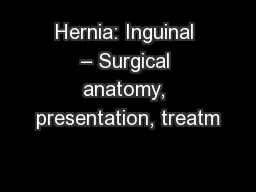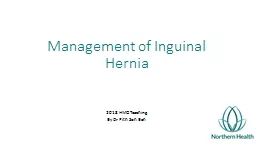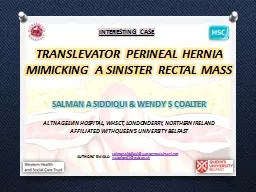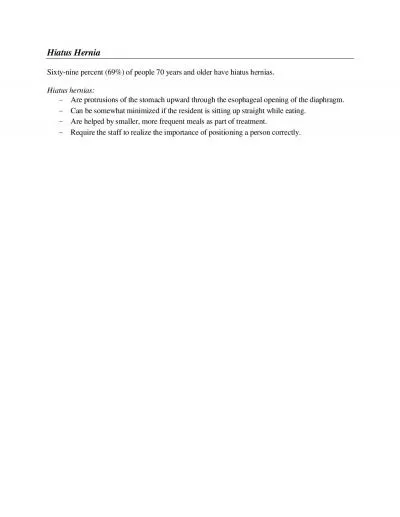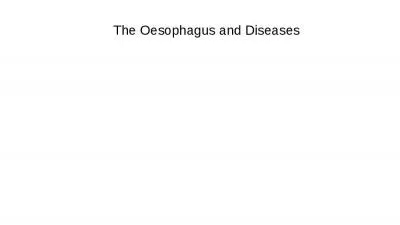PPT-hiatal hernia In the condition known as hiatus (or hiatal)
Author : carny | Published Date : 2024-01-03
hernia the opening in the diaphragm through which the esophagus passes becomes enlarged and part of the upper stomach tends to move up into the lower portion
Presentation Embed Code
Download Presentation
Download Presentation The PPT/PDF document "hiatal hernia In the condition known as ..." is the property of its rightful owner. Permission is granted to download and print the materials on this website for personal, non-commercial use only, and to display it on your personal computer provided you do not modify the materials and that you retain all copyright notices contained in the materials. By downloading content from our website, you accept the terms of this agreement.
hiatal hernia In the condition known as hiatus (or hiatal): Transcript
Download Rules Of Document
"hiatal hernia In the condition known as hiatus (or hiatal)"The content belongs to its owner. You may download and print it for personal use, without modification, and keep all copyright notices. By downloading, you agree to these terms.
Related Documents





